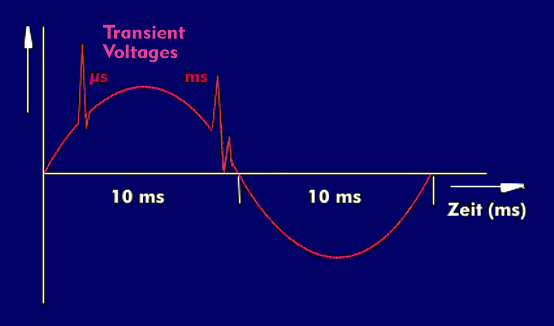surge voltage
Overvoltages are voltages that are higher than the actual supply voltage and can damage electronic parts, components, circuit boards and systems.
Overvoltages can be intermittent, extremely brief and can be triggered by transient voltage surges, also known as glitches, of a few nanoseconds. They can also be caused by mains voltage fluctuations, static charges, HF superpositions, lightning discharges, harmonics, short circuits, brief mains voltage interruptions, switching operations or defective power supplies.
Protection against overvoltages is used to protect against damage to health and to protect electrostatically sensitive devices( ESD), which can be damaged even by small overvoltages. Overvoltage protection (Ü SS) can refer to the electrostatic charges, whose influence can be prevented by improved shielding, it can also refer to the supply voltage, which can be kept at a constant level by appropriate voltage-stabilizing components such as Zener diodes, suppressor diodes, varistors, Schottky diodes and multilayer varistors, by overvoltage arresters and battery buffering. Any overvoltages that occur are discharged into the ground by means of equipotential b onding via the surge arresters and the protective contact of the socket. Surges caused by lightning can amount to several hundred kilovolts (kV) and thus be significantly higher than the breakdown voltages of the insulation of low-voltage systems.

